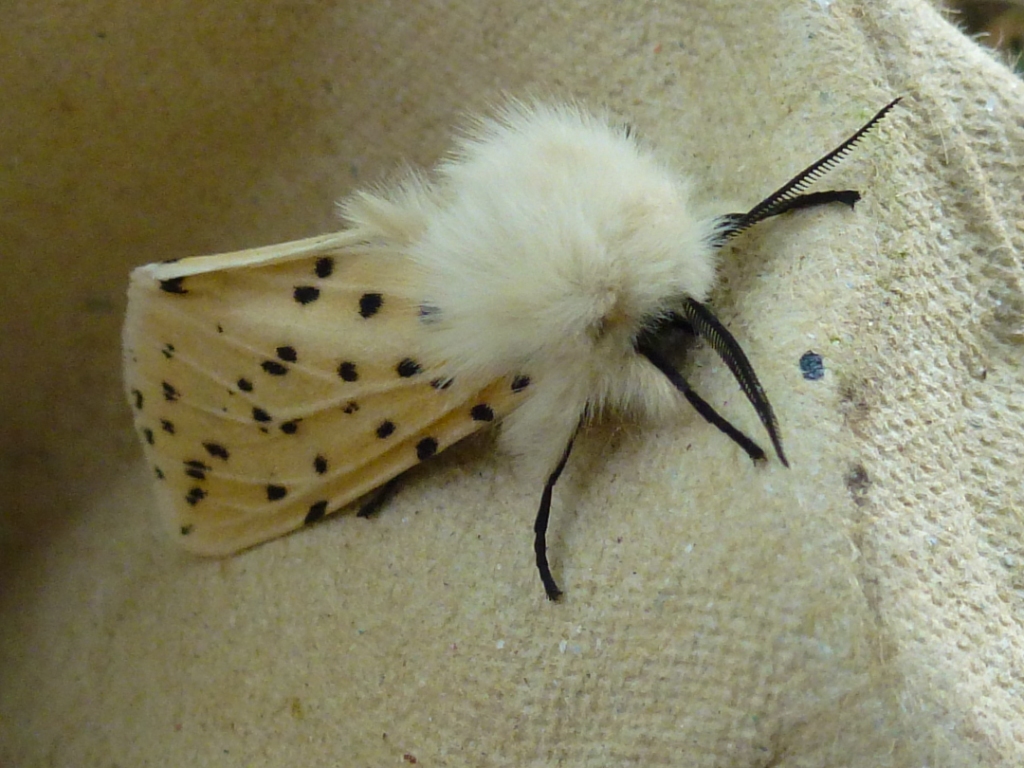White and furry with black spots… Any guesses?
Last week I came into work at 7am to go check our moth trap that we had set the night before. The morning was glorious so we sat out with a cup of tea, sitting on deckchairs around the trap. It was a very civilised affair.

A moth trap is basically a very powerful light that attracts moths; the light is in the centre of the trap which is a large circular bucket shape with a funnel on the top. The light draws the moths in which go down the funnel into the bottom of the trap. The moths then find themselves stuck until we let them go again in the morning. The bottom of the trap is lined with egg boxes which is where the moths settle for the night. You also get lots of moth eating insects found in the trap which makes it an all you can eat buffet for the moth eaters who are lucky enough to get trapped!
With help from our local moth expert Jo, we managed to identify over twenty different species of moth. Some of the most common species included scalloped hazel and nut tree tussock. My favourite from the day was the cute and furry, white ermine. They are widely distributed and fairly common. White ermine can be found in your garden and will readily come to lighted windows. They fly from late May to July and the caterpillars will feed on various wild and garden plants.
Finally, if you would like to find out more about our peregrines I would urge you to read Adam our Peregrine Rangers posts on the Falls of Clyde blog. To summarise, our eggs have failed to hatch but our parent birds are still seen regularly, especially on rainy days.
Laura Preston – Scottish Wildlife Trust, Falls of Clyde Ranger
Help protect Scotland’s wildlife
Our work to save Scotland’s wildlife is made possible thanks to the generosity of our members and supporters.
Join today from just £3 a month to help protect the species you love.
Preface
Last week I came into work at 7am to go check our moth trap that we had set the night before. The morning was glorious so we sat out with …
